Wierobieja Street
that you do not know
Although it looked more like a large village than a city road, this is where the life of Hajnówka was concentrated. And what! There was a confectionery, a market and numerous shops here. Gossip was exchanged on the steps of shops or on the sidewalks. The gentlemen would go to mister Ruta’s haircut, while the ladies waved their hair permanently at the plant on the corner of Wierobieja and Kosidłów. There was also a place where vodka was drunk standing up from under the counter. There was even an unofficial house of fun at Wierobieja.
TARGOWA STREET
Before World War II, it was obviously a Jewish district, and the street was called Targowa. Although the Jewish community did not have a very long history in Hajnówka. Jews began to settle in the town only at the end of the 19th century, due to the dynamic development of the local wood industry, and their community was established only before the First World War. In the years 1939–1941, that is during the Soviet occupation, about 600 Jews lived in the city. Many of them lived and conducted their business at Targowa Street.
By today’s standards it was not a very elegant street – the road was paved and there were concrete slabs on the sidewalks. There were mainly wooden buildings along the street. It was much less built-up than today. And its character resembled a large village more than one of the main streets in the city. The name itself spoke about the meaning of the street – here were numerous shops, service points, and even a market (T). The latter was built in the 1920s and stretched all the way to the tracks. It was still active in the 1950s, but with time it began to give way to the expanding State School of Wood Industry (3 Maja Street 27).
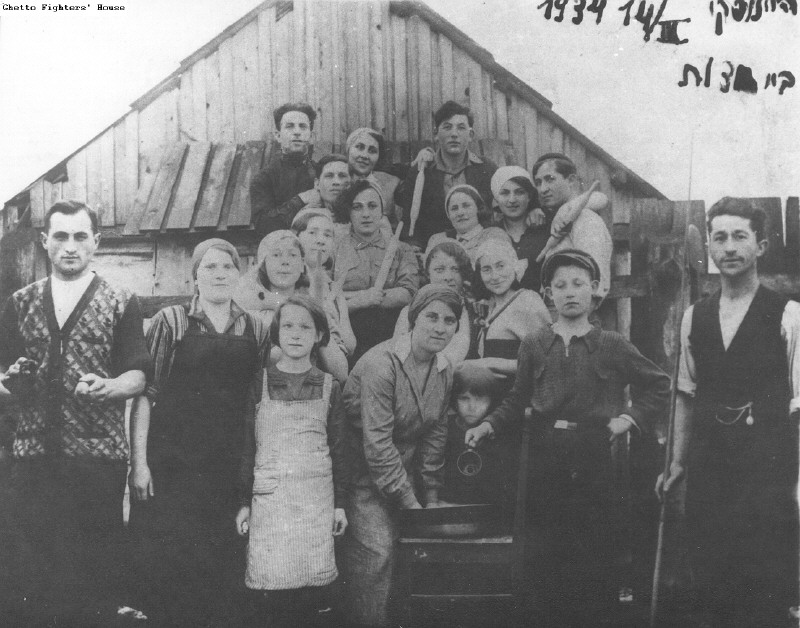
Jews from Hajnówka. The author of the photos and the personal details of the people in the photo are unknown.
So whoever needed to do shopping went to Targowa Street. It was like that from the beginning. Shoes were bought in “Bata” – today it is a small, brick building, near the intersection with Batory Street (34). Before the war, Czech Bata was the largest shoe manufacturer in the world. Neither the roof over the entrance, nor the small steps at the front have survived. When they entered the store, customers liked to stand for a while and talk to a friend. A little earlier, on the left side (going towards Batory), there was haberdashery (13). In 1935, Targowa Street changed its name to Piłsudskiego. That year the Marshal died, so the choice was obvious. Besides, nothing has changed on the street. It was still a microscale mall. People used to buy bread from a Jew named Konopiaty, for colonial goods from Kraśniański, meat and cold cuts from Protasiuk, for herring from Jewish stalls in the market square, and for groceries and accessories from Ludwik Kuźmicki. In Zaułek Targowy there was a Kosiński oil mill (O) producing linseed oil. In turn, you could buy meat from your own slaughter, such as beef, veal or mutton, in the Mojżesz Zelman store (at the very end of Wierobieja Street, on the right, right next to Batory – 36).

Building no. 36. Until today, it has been preserved in a similar state to its original condition.
Before the war, it housed the company store of the Czech shoe company Bata, represented by Hersz Małmed. A shoe store operated here until the end of the 1960s.

No. 36. Queue to the butcher’s shop of Andrzej Borowik in the mid-1980s. On the right side, Zbigniew Dzwonkowski’s photo shop, and the building on the left – Julian Drewnowski’s confectionery. Before the war, Mojżesz Zelman’s shop.
GODLEWSKI CONFECTIONERY
There was also a Godlewski’s confectionery. One of the most elegant places in Hajnówka before the war. It was located at the corner of Wierobieja and 3 Maja Streets (3 Maja 31). Today it houses a florist shop called “Tamara”. It used to be an elegant place with a wide selection of sweets, where those who could afford it would go, and the rest to celebrate special occasions. Apparently, before the war, you could even get citrus and other southern fruits there, which was not so easy at that time.
This one has a flair for business – that is what Godlewski was said about in the city. Initially, he was a co-owner of the Turpentine House (the factory was located in the area of today’s city park). He was to pay workers half their wages in cash and half in food vouchers. They could be realized – and how! – only at his grocery store.
JULIAN DREWNOWSKI
During the communist era, children bought puff pastry in Julian Drewnowski’s confectionery (36). The products here were excellent, although it was rumored that the punch for soaking the cake was squeezed out by a fairly used cloth. At that time, however, people were not really surprised. The owner, apart from being famous for good cakes, had an interesting hobby – he grew cacti.
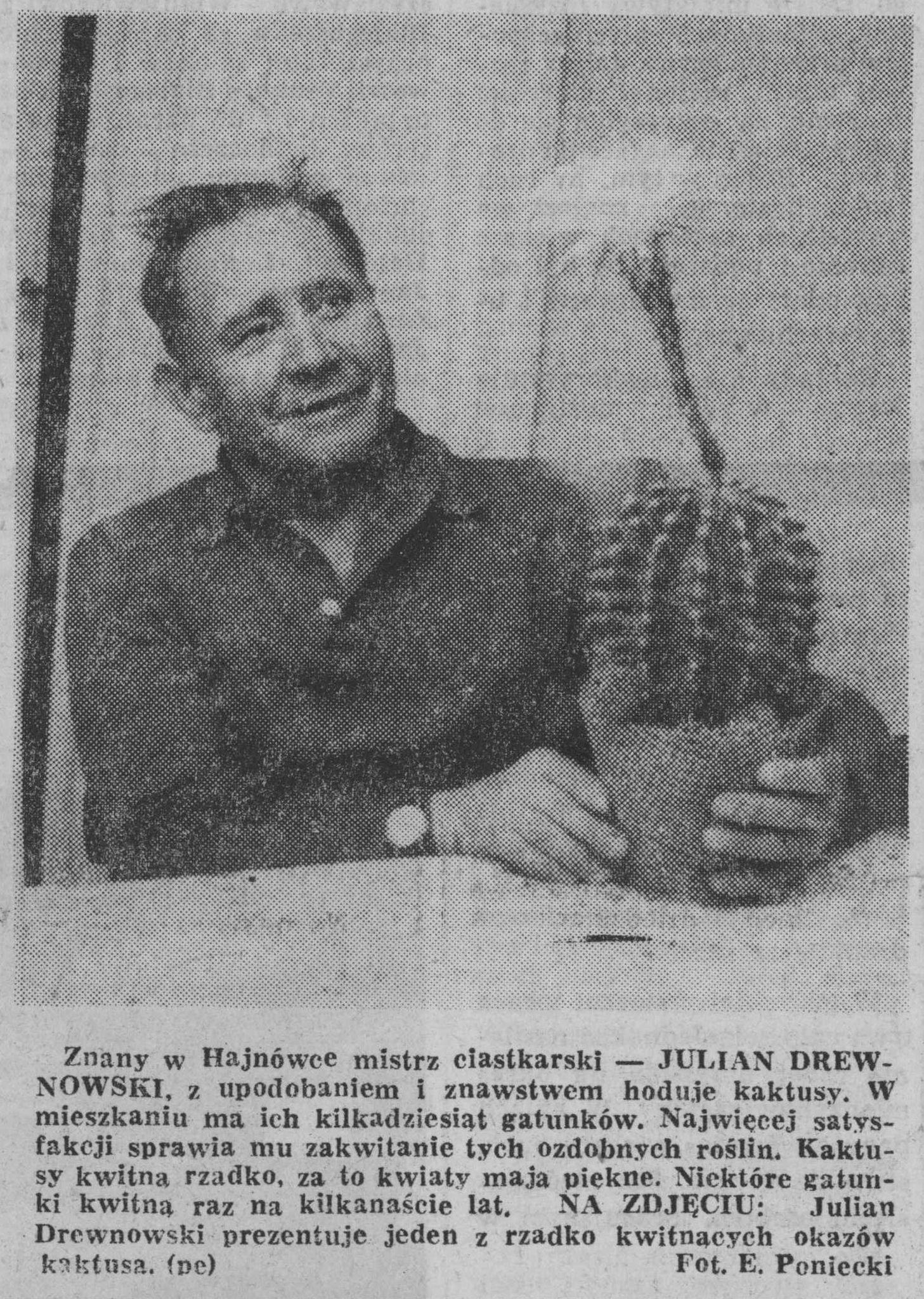
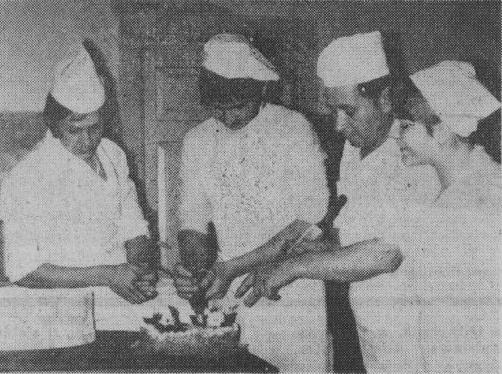
HAJNOWIANKA
After the war, in terms of elegance, “Hajnowianka” was in the lead (1). The restaurant was located on the ground floor of the PSS Społem building. The facility was built at the end of the 1950s. There was a textile and clothing store on the first floor, offices above, and several business apartments at the top. The menu was typical of the time. Cabbage reigned. So there was bigos, cabbage soup, and cabbage salad. As the main course – a classic from Poland – pork chop. But everything, as the Hajnowians recall, is really tasty. Behind the PSS Społem building there was an orangeade factory (2). It was led by Mr. Sawicki. The business continued for some time after the war, later it was taken over by the people’s government.
When it comes to cooking from childhood memories, there was also a canteen (J). It was located behind the building where the deputies’ office is now located (previously it was the first seat of the city authorities). During the winter or summer holidays, working parents often bought lunches there for their children. You approached with a note, but you never knew what was for dinner today. Nobody has posted a list of dishes there. But the room was always full of people, so finding an empty seat was a challenge.
The Hajnowians also have less “appetizing” memories. For example, from “Sasanka”, which used to buy cartridges for saturators. It was located on the other side of today’s roundabout.

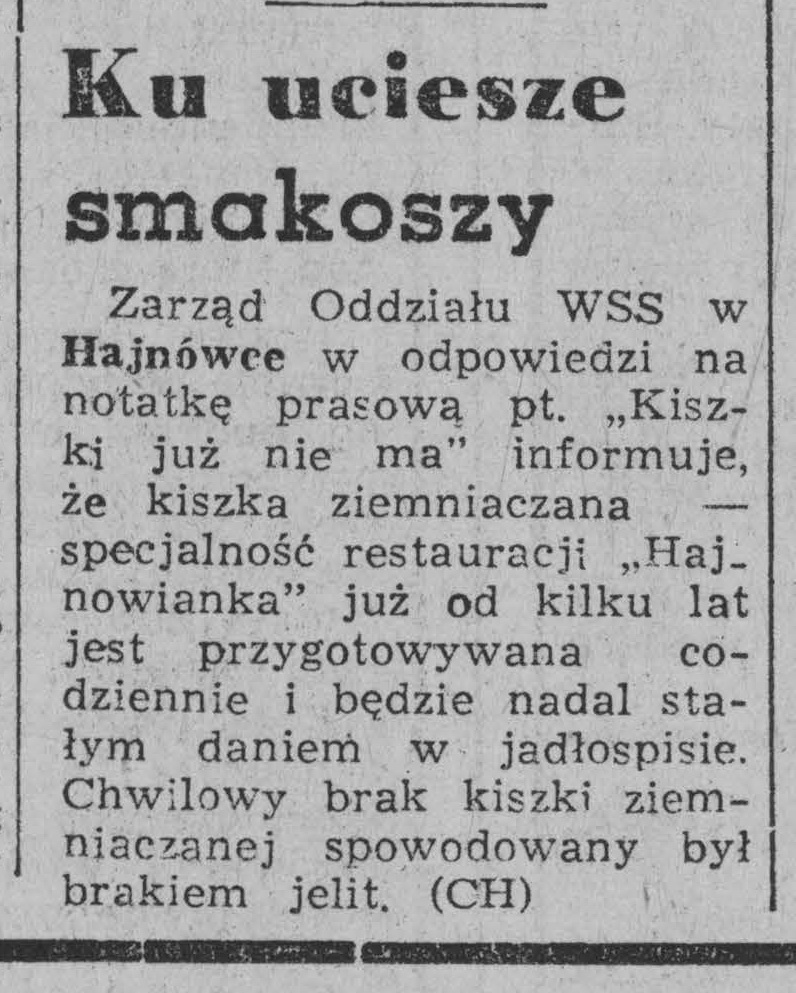
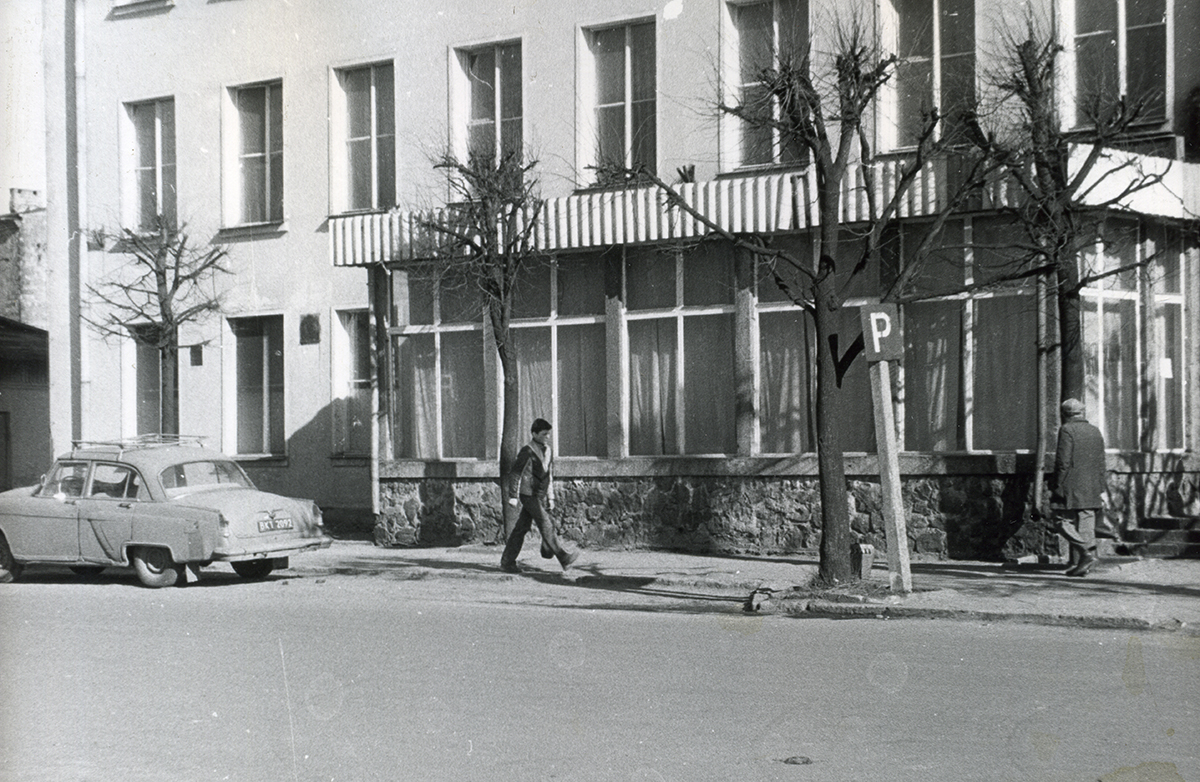
In “Hajnowianka” you could eat well, but also have fun. Occasional events were held here. A prominent party activist reportedly appeared at a New Year’s Eve party in the 1960s. An acquaintance here, a friend from school there – he did not pour alcohol under his collar. Finally, drunk, he collapsed on the table. It lasted until the end of the event. The guests are leaving, it is not known what to do with him. However, the janitor came, grabbed the prominent by the collar and exposed him to the frost, where he sobered up a bit. Ultimately, pitying friends handed over the partygoer to the enraged wife.
PARTY LIFE
Since we are drinking, it must be admitted that the nightlife lasted on Wierobieja Street both before and after the war. If Godlewski’s confectionery, or later “Hajnowianka”, were considered elegant places, they were completely against them. For example, a small tavern run by Stanisław Kęska (7). The building has survived in an unchanged cubature, making it easy to imagine the conditions there. And they were… peculiar.
Imagine guests crammed into 20-30 square meters. This is roughly the size of a small building that now houses a shoe shop. The entrance was where it is now. There is a buffet in front of it, and on both sides, along the walls, there are consumption counters.
The menu was not sophisticated – home-made bread, sausage bought from a family in the countryside, draft beer and moonshine from under the counter, several times cheaper than the shop vodka. Such an offer and conditions were, however, quite sufficient for the regulars thirsty for respite. When discussions became too nervous, interlocutors were asked to leave. And there it was that, instead of consensus, there was a fight. So it was not without uniformed interventions. However, the members of the Jewish community never took part in them. They were also not seen drunk. Interestingly, both Sanacja policemen and post-war militiamen turned a blind eye to the vodka from under the counter.
HOUSE OF PLEASURE
On Wierobieja Street, closer to Batory Street, there was also another place (29). “Out in the city” it was said that you could not only eat and drink there, but also meet other needs. These needs – with the consent of the hosts – were taken care of by the entire family of co-workers – the father, mother and two daughters. The father was supposed to provide an influx of clientele, while the daughters, who were very pretty, looked after better clients. When necessary, the services were also provided by the mother, although, apparently, only real connoisseurs used them. Once, even a serious conflict broke out. One of the clients decided that Miss Krysia, one of the daughters, charged herself too much for the service.
After spending the intoxicating night, the man was left with empty pockets. So the next day he made a complaint. Beautiful Krystyna refused to recognize it. Word for word and a brawl broke out.
The case went to the college. The indignant client stayed with his, the miss with hers. Finally, an angry Krysia took her hips and shouted:
What are you, you fool, did you think?
A** does not spend the rest!!
Miss Krysia allegedly had a weakness for one of the gentlemen who ran his business next door. It happened that during the day he closed his business for some time. It was known then that the neighbor had come to visit.
WIEROBIEJA STREET 22
The tenement house, which housed a pharmacy until the 1970s, is well-preserved. During the German occupation, the headquarters of the order police was also located here. The building belonged to two married couples – Nurzyński and Gołaszewski. At its back there is a yard and a long outbuilding with several large doors. Despite the passage of time, little has changed. It’s worth a look here. One can risk a statement that it was here that the first open-air cinema in Hajnówka took place. Of course, quite specific, because the organizers of the sessions were … Red Army soldiers. It was 1944. The war was still in full swing, but the “brotherly” army was already boasting about successes. A canvas was hung on the largest gate, which was inserted into the backyard. Then the projector stood. And beneath it are the benches and chairs where the inhabitants used to sit. At their feet – a crowded children’s room. Among the children fascinated by the magic of the big screen, there was also Edward Poniecki, a Hajnówka native. Then an eight-year-old boy.
But it was an experience! I saw a cinema for the first time in my life. Of course, in the beginning there was simple propaganda, but then films were shown. It was only years later that I realized that it was in this yard that I saw "The World Laughs" for the first time.

But what the propaganda! What the heroic deeds of the Red Army! A blonde diva, a star of Soviet cinema, Stalin’s sex bomb, Lyubov Orlov, appeared on the screen.
The projections enjoyed great popularity among the residents. Did the propaganda impress them? Today it’s hard to say. However, it can be assumed that Orłowa made a much greater impression, or at least on the male part of the audience, panting with the last of her strength: “Water! Water! ”. This issue amuses Edward Poniecki to this day. It was spoken at the moment when the heroine was drowning.
After World War II, the street changed its name again. Also with the spirit of the times. Marian Buczek, a distinguished communist activist, became its patron. In turn, the street owes its contemporary name to Fr. Ignacy Wierobiej, the priest of the Roman Catholic parish in Hajnówka. Older Hajnówka residents still remember this clergyman, when he travels the city by bicycle and greets the people he meets with a loud “good morning”. He was famous for being kind to people, regardless of their views. He was a great supporter of ecumenism.
There are few traces of the Jewish community. The synagogue (B), which its members erected in the so-called Zaułek Młynarski at the end of the 1920s. It was a large, wooden building, painted white and blue. The interior was also kept in such colors. It burned down in 1941. There was a war and a group of Russians hid in the synagogue. The Germans threw grenades there, the explosion started a fire. Only a few Jews of Hajnówka survived the war. Everyone went abroad.
The article was written on the basis of available historical sources and memories of the inhabitants of Hajnówka. In particular, we would like to thank Mr. Edward Poniecki, who wanted to tell about Wierobieja Street from his childhood and youth. Under no circumstances should this text be treated as a historical source. It is only an attempt to paint an image of this street based on human stories.
